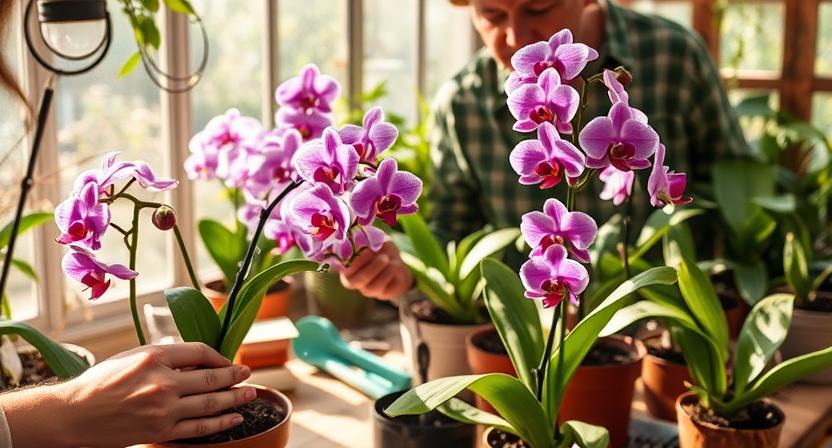French Hybrid Lilac: A Modern Twist on Classic Beauty
Innovation and nature are rarely spoken together. However, the two frequently combine to produce something extraordinary in the rapidly changing field of hybrid technology. The French hybrid lilac, a representation of botanical progress that combines conventional horticulture with contemporary hybrid techniques, is one such wonder. This flowering plant is more than just a beautiful sight; it’s evidence of how hybrid technology is reinventing even the most traditional aspects of nature.

The Evolution of Lilacs Through Hybrid Technology
The beauty and scent of lilacs have long been appreciated. Their potential has increased with the development of hybrid technologies. Despite its beauty, traditional lilac types frequently have drawbacks like short flowering seasons and sensitivity to climatic changes. By improving characteristics like colour brilliance, blooming frequency, and disease resistance, hybridisation overcomes these constraints.
What Makes the French Hybrid Lilac Unique?
The species combination of the French hybrid lilac is not haphazard. It is the outcome of meticulously designed hybridisation methods combining European types and species such as Syringa vulgaris. These hybrids have a prolonged blooming window, finer colouration, and dense clusters of blossoms. Its technology is based on cellular-level selective breeding, which guarantees that every new cultivar outperforms the previous one.
The Science Behind Lilac Hybridization
At its core, lilac hybridization employs methods such as:
- Regulation of cross-pollination
- Propagation of tissue cultures
- Testing for genetic resilience
These scientific procedures guarantee that lilacs will be more resilient to environmental challenges in subsequent generations. Additionally, it preserves the genetic integrity of the plant while enabling horticulturists to concentrate on particular objectives, such as enhancing colour or lowering allergens.
Environmental Advantages of French Hybrid Lilacs
These hybrids have benefits for the environment in addition to appearance. They frequently need fewer artificial fertilisers, less water, and are more suited to poor soil. By doing this, the carbon impact linked to conventional flower growing is decreased. French hybrids have shown surprisingly resilient in regions with poor soil quality or drought.
Landscaping with Purpose: Why Hybrids Are Changing Garden Design
In sustainable landscaping, French hybrid lilacs are increasingly being used as focal points. They make landscape design more efficient because of their robust structure and reliable bloom patterns. Green architects and urban planners are incorporating them into public areas where a strong visual impact and minimal upkeep are needed.
Features That Make Them Landscaping Favorites:
- High resilience to pollution in the city
- Regulated growth trends
- Longer flowering seasons
- Minimal vulnerability to typical garden pests
French Hybrid Lilac and Urban Farming
More and more urban farms are searching for decorative plants that offer benefits beyond aesthetics. Certain varieties of French hybrid lilac inherently repel insects with their delicate scent. In gardens that prioritise organic cultivation, this feature offers useful value.
Market Demand and Commercial Horticulture
French hybrids are driving the growth in demand for hybrid plants. Horticultural companies and nurseries understand the importance of providing plants that blend efficiency, durability, and beauty. Such hybrids are the ideal mix of grower practicality and consumer appeal in commercial horticulture.
Hybridization in Floristry: A Blossoming Trend
French hybrid lilacs are highly sought after in the florist industry. They are perfect for bouquets and event décor since their petals hold their structure longer in arrangements. For professional florists, hybrid procedures guarantee that the blooms keep their shape and scent while being transported.
Benefits for Florists:
- Extended shelf life
- Reduced spoiling waste
- Additional colour variations to go with seasonal themes
Challenges in Hybrid Plant Development
Despite its advantages, researchers find that creating hybrids such as this is not an easy undertaking.To produce a stable hybrid with the necessary qualities, they require multiple growing cycles.If they over-hybridize, there’s also a chance that they will lose genetic diversity.In botanical hybridization, researchers follow ethical procedures to ensure that biodiversity is not lost throughout the process.
Future Innovations: Smart Integration with Hybrid Plants
In the future, smart gardening technology might be used with hybrid plants. Consider French hybrid lilac shrubs that have sensors installed to track the microclimate or soil health. These upcoming developments will bring hybrid plants into line with intelligent ecosystems.
Cultivating French Hybrid Lilacs: What You Should Know
FarmersneedtoproperlycareforFrenchhybrids,whicharemoreresilientthantheirtraditionalcounterparts.
Full sun and well-drained soil are ideal for their growth. Topreparetheplantforthefollowingcycle,gardenersshouldpruneitassoonasitblooms.
Key Care Tips:
- Plant in the autumn or early spring.
- Make sure there is enough room for air to circulate.
- Utilise organic compost to strengthen roots.
- Keep an eye out for leaf spot or mildew symptoms.
DIY Gardening with Hybrid Lilacs
Starter kits containing young French hybrid lilac seedlings are now available to home gardeners. Eco-conscious homeowners who want to incorporate more sustainable plants into their gardens are particularly fond of these kits. Additionally, hybrid kits include guidelines and soil enhancers, making the process easier for novices.
The Broader Impact on Biodiversity
Responsible hybrid plant production is aiding in the preservation of species, despite the claims of some detractors that hybridisation may disrupt natural biodiversity. These plants indirectly save local wildlife and pollinators by lowering dependency on fertilisers and herbicides. The goal of French hybrid design is ecological harmony rather than supremacy.

Comparing French Hybrid Lilacs with Other Hybrids
The use of hybrid technology is not limited to lilacs. French hybrids are more resilient to the environment and require less maintenance than other hybrid plants, such as tulips or roses. Additionally, they blend in better with varied botanical arrangements, which makes them suitable for both residential and commercial green areas.
Conclusion: French Hybrid Lilac as a Symbol of Botanical Progress
At the nexus of sustainability, innovation, and beauty is the French hybrid lilac. It is an example of what hybrid technology can achieve in horticulture when used carefully. These lilacs will continue to be at the vanguard of hybrid plant evolution as the need for hardy, low-maintenance, and eye-catching plants rises. Their growth portends a bright future in which science and nature interact peacefully rather than antagonistically.




Post Comment